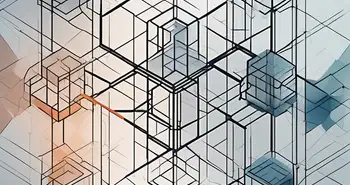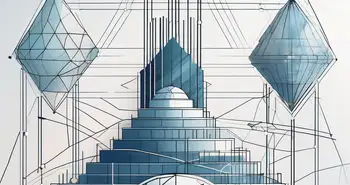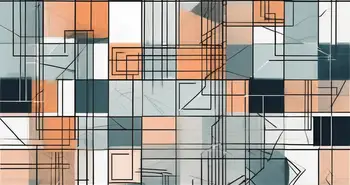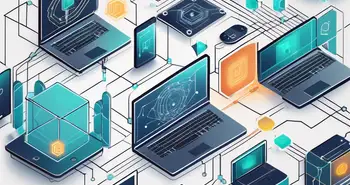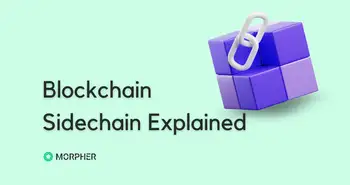The Future of Blockchain Efficiency: Exploring Modular Blockchains
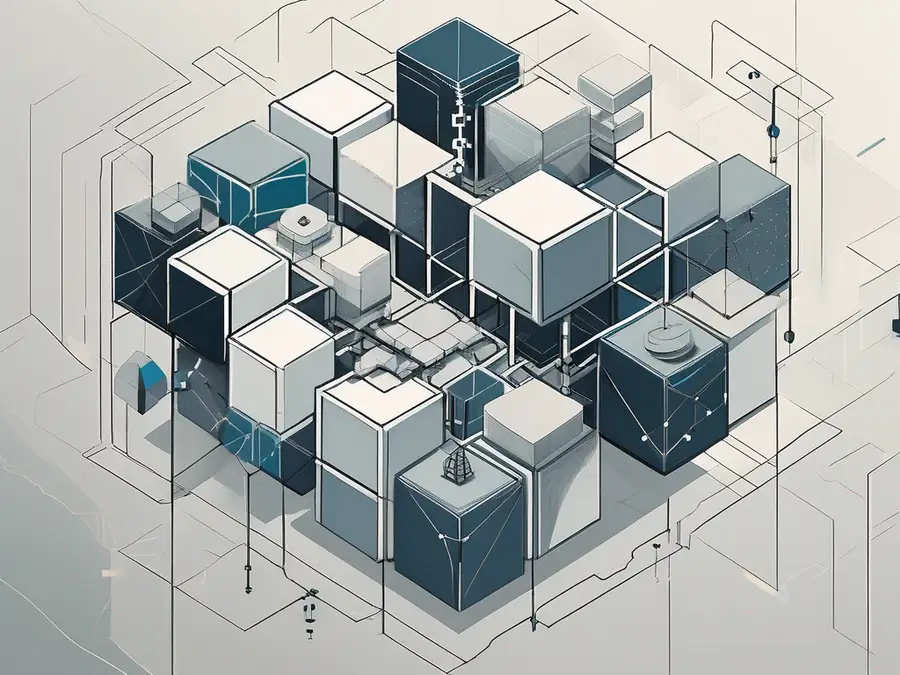
As an expert in the field of blockchain technology, I'm excited to share with you the immense potential that modular blockchains hold. With their unique design and advanced features, modular blockchains are taking the world of digital transactions by storm. In this article, we will delve into the concept of modular blockchains, discuss their evolution, explore their potential, examine the challenges in implementing them, and look into what the future holds for this groundbreaking technology.
Understanding the Concept of Modular Blockchains
Modular blockchains, in simple terms, refer to a blockchain architecture that is composed of various interconnected modules. These modules can be customized and combined to create a blockchain system tailored to specific needs. By breaking down the blockchain into smaller, more manageable components, modular blockchains offer enhanced flexibility and scalability.
One of the key advantages of modular blockchains is the ability to easily integrate new features and functionalities without having to overhaul the entire system. This modularity allows for faster innovation and adaptation to changing technological requirements. Developers can mix and match different modules to create unique blockchain solutions that meet the specific demands of various industries.
Defining Modular Blockchains
In a modular blockchain system, each module serves a specific purpose or function. These modules can include consensus mechanisms, smart contract functionality, identity verification protocols, and more. By separating these components, modular blockchains introduce modularity, enabling developers to easily adapt and upgrade different aspects of the blockchain system without disrupting the entire network.
Furthermore, modular blockchains promote interoperability between different blockchain networks and systems. This interoperability is crucial for fostering collaboration and information sharing across various platforms, leading to a more connected and efficient blockchain ecosystem.
The Core Components of Modular Blockchains
Modular blockchains typically consist of three core components: the network layer, the consensus layer, and the transaction layer. The network layer handles communication between nodes in the blockchain, ensuring seamless data transmission. The consensus layer determines how transactions are validated and added to the blockchain. Lastly, the transaction layer executes and records transactions within the blockchain system.
Each core component plays a vital role in ensuring the smooth operation of the blockchain network. The network layer establishes the foundation for peer-to-peer communication, enabling nodes to exchange data securely and efficiently. The consensus layer is responsible for maintaining the integrity and security of the blockchain by establishing rules for validating transactions and achieving network consensus. Finally, the transaction layer processes and stores transaction data, ensuring transparency and immutability within the blockchain system.
The Evolution of Blockchain Technology
The concept of modular blockchains has evolved from the traditional blockchain technology we are familiar with. Traditional blockchains, as the name suggests, were designed as closed systems with limited customization options. However, the need for scalability and increased functionality led to the development and adoption of modular blockchains.
The Journey from Traditional to Modular Blockchains
Many early blockchain systems lacked flexibility, making it challenging to accommodate growing demands of various industries. Modular blockchains address this issue by allowing developers to select and integrate modules that best suit their requirements. This shift from a rigid, one-size-fits-all approach to a modular framework has paved the way for innovative blockchain applications.
Technological Advancements Facilitating Modular Blockchains
Technological advancements have played a crucial role in enabling the rise of modular blockchains. With the development of interoperability protocols and standardized interfaces, modules from different blockchain systems can seamlessly communicate and integrate with each other. This interoperability allows for a broader range of functionalities and promotes collaboration in the blockchain ecosystem.
The Potential of Modular Blockchains
Modular blockchains offer numerous advantages over their traditional counterparts. Let's explore some of the key benefits that make them a game-changer in the world of blockchain technology.
Enhancing Scalability with Modular Blockchains
Scalability has been a major concern for blockchain networks, with traditional blockchains struggling to handle increasing transaction volumes. Modular blockchains address this challenge by allowing for the integration of scalable modules. Developers can add or remove modules based on the specific requirements of their use case, thus ensuring a highly scalable and efficient blockchain system.
Security Advantages of Modular Design
Modular blockchains also offer enhanced security through their design. By breaking down the system into modular components, the impact of a security breach can be contained and isolated. This means that even if one module is compromised, the entire blockchain network remains secure. Additionally, the flexible nature of modular blockchains allows for the implementation of improved security features and protocols.
Challenges in Implementing Modular Blockchains
While the potential of modular blockchains is vast, there are several challenges that need to be addressed for widespread adoption and implementation.
Technical Hurdles in Modular Blockchain Adoption
Integrating and coordinating various modules within a blockchain system can be a complex process. Technical hurdles such as interoperability issues, standardization of interfaces, and compatibility between modules from different blockchain systems need to be overcome. Collaborative efforts among blockchain developers and standardization bodies are essential to address these challenges effectively.
Overcoming Regulatory and Compliance Issues
Blockchain technology is still relatively new, and regulatory frameworks surrounding it are evolving. Modular blockchains introduce additional complexities, as different modules may fall under different regulatory requirements. Striking a balance between innovation and compliance is crucial for the successful implementation of modular blockchains.
The Future of Blockchain: A Modular Perspective
As we look ahead, the future of blockchain technology appears promising, with modular blockchains playing a critical role in shaping the digital landscape.
Predicted Trends in Modular Blockchain Development
We can expect to see further advancements in the development of modular blockchains. Modules will become more specialized, allowing for the creation of highly tailored blockchain systems. The integration of artificial intelligence and machine learning algorithms will enhance the functionality and performance of modular blockchains.
The Role of Modular Blockchains in Future Digital Economy
Modular blockchains hold immense potential in various industries, ranging from finance and supply chain management to healthcare and identity verification. Their flexibility and scalability enable seamless integration into existing systems, paving the way for more efficient and transparent digital transactions.
From my years of experience working with blockchain technology, I have witnessed firsthand the transformative power of modular blockchains. The ability to customize and adapt blockchain systems to meet specific needs is a game-changer. It empowers organizations to build robust and scalable solutions that drive innovation and unlock new opportunities.
Frequently Asked Questions (FAQ)
What are modular blockchains?
Modular blockchains are blockchain architectures composed of interconnected modules. These modules can be customized and combined to create a blockchain system tailored to specific needs, offering enhanced flexibility and scalability.
How do modular blockchains enhance scalability?
Modular blockchains enhance scalability by allowing developers to integrate scalable modules into their blockchain system. This enables them to add or remove modules based on their use case's specific requirements, ensuring a highly scalable and efficient blockchain network.
What security advantages do modular blockchains offer?
Modular blockchains offer enhanced security through their design. By breaking down the system into modular components, the impact of a security breach can be contained and isolated. Additionally, the flexible nature of modular blockchains allows for the implementation of improved security features and protocols.
What challenges exist in implementing modular blockchains?
Implementing modular blockchains can pose technical challenges such as interoperability issues, standardization of interfaces, and compatibility between modules from different blockchain systems. Regulatory and compliance issues also need to be addressed, as different modules may fall under different regulatory requirements.
What is the future outlook for modular blockchains?
Modular blockchains are expected to continue evolving and play a significant role in various industries. We can anticipate further specialization of modules, integrating artificial intelligence and machine learning algorithms to enhance performance. Modular blockchains will be instrumental in driving the future digital economy across industries.
In conclusion, modular blockchains have revolutionized the world of digital transactions by offering flexibility, scalability, and enhanced security. While challenges exist, collaborative efforts and ongoing advancements will pave the way for a future where modular blockchains truly unleash their potential. As an expert in this field, I encourage organizations to explore the possibilities and embrace the power of modular blockchains.
Embrace the future of trading with Morpher, where the potential of modular blockchains is not just a concept, but a reality. As you've seen the transformative power of modular blockchains in enhancing scalability, security, and flexibility, it's time to experience these benefits firsthand. Morpher.com is at the forefront of this revolution, offering a unique trading platform that leverages blockchain technology to provide zero fees, infinite liquidity, fractional investing, and much more. Don't miss out on the opportunity to be part of a trading evolution. Sign Up and Get Your Free Sign Up Bonus today, and join the community that's reshaping the world of investing.

Disclaimer: All investments involve risk, and the past performance of a security, industry, sector, market, financial product, trading strategy, or individual’s trading does not guarantee future results or returns. Investors are fully responsible for any investment decisions they make. Such decisions should be based solely on an evaluation of their financial circumstances, investment objectives, risk tolerance, and liquidity needs. This post does not constitute investment advice.

Painless trading for everyone
Hundreds of markets all in one place - Apple, Bitcoin, Gold, Watches, NFTs, Sneakers and so much more.

Painless trading for everyone
Hundreds of markets all in one place - Apple, Bitcoin, Gold, Watches, NFTs, Sneakers and so much more.

